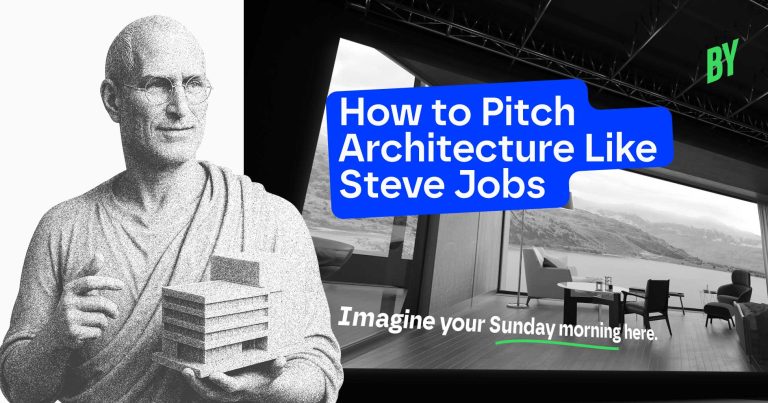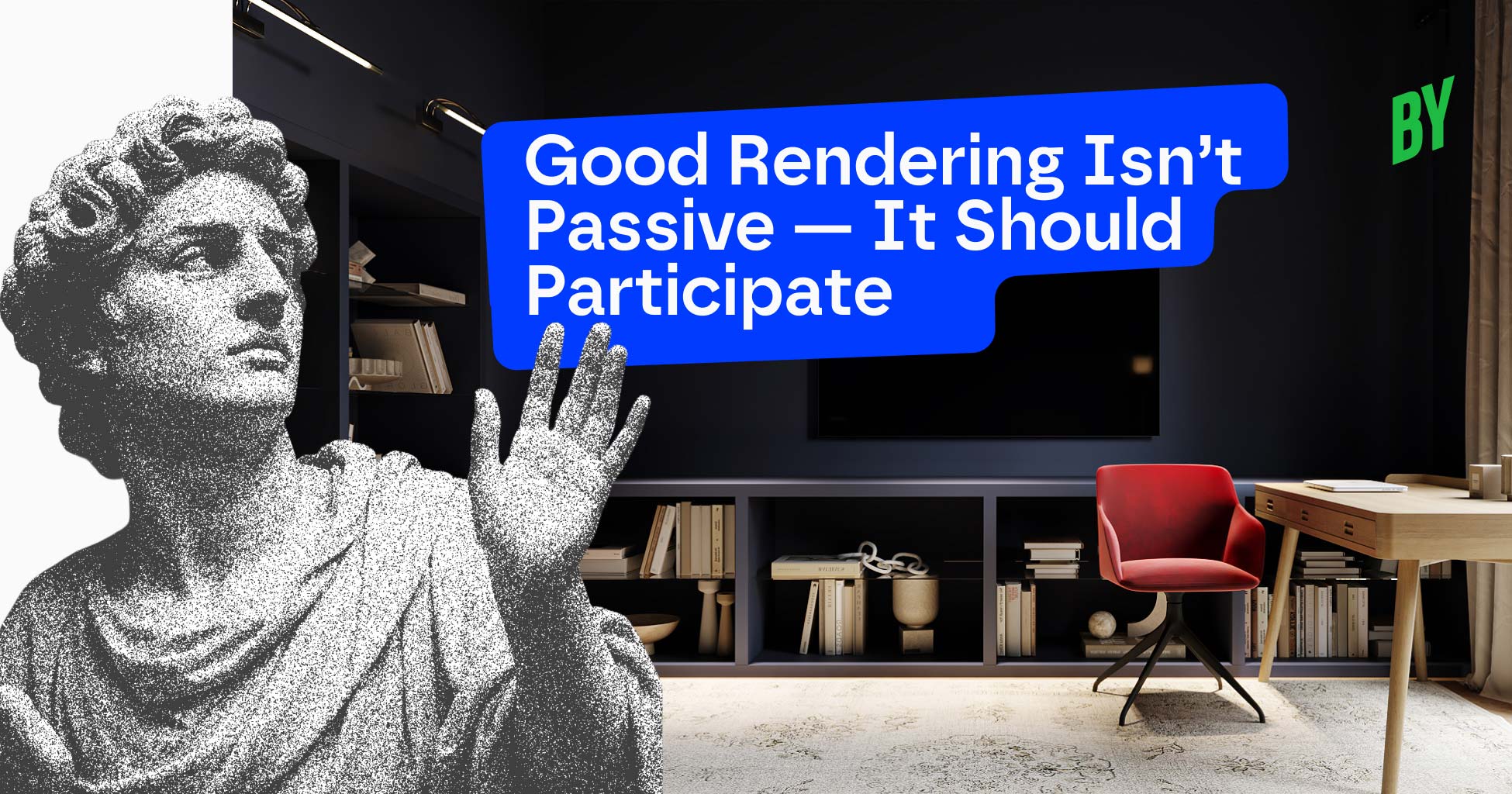A Participatory Render Joins the Conversation
A participatory render does more than illustrate. It advocates.
It highlights the intent behind a design. It reinforces emotional cues. It guides the client’s eye. It makes them feel the story—not just see the form.
It becomes a part of the discussion. It influences the client’s decision not by shouting louder, but by speaking directly to their emotions.
That’s what participation means. It’s not decorative. It’s persuasive.
Real Example: Reframing Doubt Into Desire
One client was hesitant about dark materials. Swatches and plans didn’t help.
But then they saw the render: Warm lighting, textured shadows, soft reflections.
Suddenly, it wasn’t about the color. It was about mood.
The render reframed the fear into vision. It took a technical concern and gave it an emotional answer. What was once seen as risky became desirable—because the client could see it, feel it, and want it.
When the Render Adds Noise, Not Meaning
Too many artists pack a scene full of props to make it feel “complete.”
But without purpose, those elements clutter the story.
It’s not about filling space. It’s about directing attention.
Every object should answer: What is this telling the client?
A newspaper on the coffee table tells a story of morning routine. A whiskey glass at sunrise doesn’t.
If the scene feels crowded but says nothing, it’s not storytelling. It’s noise.
You Don’t Need Drama to Create Emotion
It’s a myth that renders must be dramatic or dynamic to participate.
Sometimes, subtlety is stronger. A morning glow. A coffee cup. A calm rhythm.
Participation isn’t about shock value. It’s about emotional resonance.
When we rendered a quiet bedroom with soft morning light, an open book, and a half-sipped coffee—the client instantly connected. They said: “This feels like home.”
Let the mood match the moment. Let the light do the speaking.
Tight Frames Speak Louder Than Wide Shots
Wide shots explain the space. Tight shots invite the viewer into it.
Clients connect emotionally when they see scenes they could step into.
Yes, wide angles are efficient. They show structure, circulation, and form. But it’s the close-up moments that move decisions.
A wide shot informs. A tight shot persuades.
Want to build trust? Frame intimacy. Zoom in on atmosphere.
Why Most Renders Stay Passive
Deadlines. Budgets. Low client expectations.
We’ve all been there.
But the danger is: you keep creating for clients who don’t demand more. And your work stays at that level.
Participatory rendering raises your standard. And it attracts better clients.
Because when you start designing for emotional response, not just visual approval, you enter a different category. One where your work gets remembered, recommended, and rebooked.
The Gut Test: Would You Approve This?
Put yourself inside the image. Literally.
Would you feel something? Would you want to live in this moment? Does the render create desire—or just deliver data?
We call this the POV test:
- Stand inside your own render
- Ask: Am I comfortable? Curious? Moved?
- If not, what’s missing?
The answer often lies in mood—not materials.
What Participatory Renders Actually Do
They don’t just fix confusion. They spark curiosity. They don’t just answer doubts. They create desire.
They move the viewer from “I see it” to “I want it.”
Clients breathe inside them. They imagine. Project. Approve.
Participatory renders don’t wait to be explained. They do the explaining. They don’t follow the pitch. They lead it.
That’s the power of visual trust.
Lighting That Feels Like Home
When guests come over, you light the whole space. When you’re alone, you light just enough.
That second feeling? That’s what your render should capture.
Soft light. Clear mood. Honest intent.
We once explained this to a client choosing lighting for a living space. Instead of blasting every light on, we framed it with ambient glow, soft daylight, and a single lamp. It felt lived-in, not staged. That’s what won their trust.
The Silent Voice in the Room
Your render is always saying something. Even if the client says nothing.
It can say:
- This is possible.
- This is thoughtful.
- This is worth believing in.
Or it can say nothing.
Participatory renders build trust—even when no one points at the screen. They make the room quieter. They hold attention without asking for it.
They become the moment clients remember.
Making Every Render Count
Clients don’t always know how to explain what they want. But they know what they feel.
If your render evokes emotion, they’ll say yes faster. If your render holds presence, they’ll trust your decisions more.
Because you’re not just showing a space. You’re showing how they might live in it.
Passive renders document. Participatory renders invite.
The goal isn’t just accuracy. It’s atmosphere.




